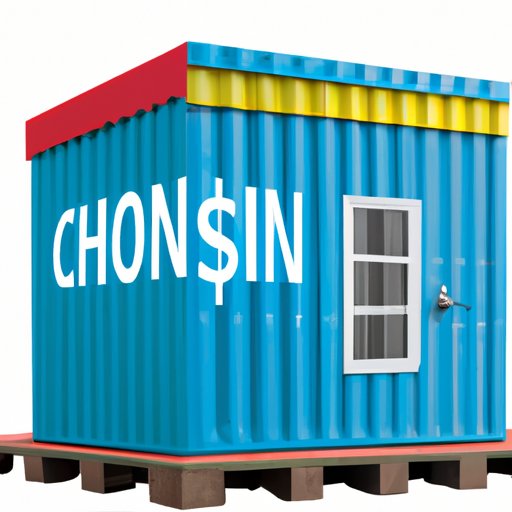Introduction
Container homes have become increasingly popular in recent years due to their unique look, affordability, and sustainability. A container home is essentially a house made out of a shipping container — usually a 20- or 40-foot steel box — that has been modified for residential use. They are typically insulated and equipped with plumbing, electrical wiring, and other amenities.
Building a container home can be a great way to save money while still getting the features you want in a home. However, it can also be expensive, so it’s important to do your research before starting your project. In this article, we will discuss how to finance a container home, including researching financing options, alternative financing methods, and tips for finding the right financing option.
Research Financing Options
The first step in financing a container home is to research all available financing options. There are several different types of financing available, each with its own advantages and disadvantages. Here are some of the most common financing options for container homes:
Loans and Lines of Credit
One of the most common ways to finance a container home is through a loan or line of credit. Loans are typically used for larger projects, such as building a whole house from scratch, while lines of credit are typically used for smaller projects, such as modifying a single container. When applying for a loan or line of credit, it’s important to shop around and compare rates to ensure you’re getting the best deal possible.
Grants and Other Funding Sources
Grants and other funding sources are another option for financing a container home. Grants are typically awarded by government agencies or non-profit organizations, and they can be used to cover part or all of the costs associated with a project. It’s important to research any grants or other funding sources that may be available in your area.
Crowdfunding
Crowdfunding is another popular method of financing a container home. With crowdfunding, you create a campaign on a platform such as Kickstarter or GoFundMe and ask people to contribute to your project. This can be a great way to raise money quickly, but it’s important to make sure you have a solid plan in place for how you’ll use the funds.
Alternative Financing Options
In addition to traditional financing options, there are also some alternative financing options that may be worth considering. Here are a few of the most common alternative financing methods:
Bartering Services or Goods
Bartering services or goods is a great way to get the materials and labor you need for your container home without having to pay for them. You can offer to trade your services or goods for the materials and labor you need. This can be a great way to save money and get the job done quickly.
Savings and Investments
Finally, if you have the means to do so, you can fund your container home with your own savings or investments. This is a great option for those who have the financial resources to do so. Just be sure to think carefully about how much you can realistically afford to invest in your project.
Conclusion
Financing a container home can be a daunting task, but with the right research and planning, it doesn’t have to be. There are several financing options available, from traditional loans and lines of credit to alternative methods such as bartering services or goods and using your own savings or investments. Do your research and find the option that works best for you.
When looking for financing, it’s important to shop around and compare rates. Also, make sure you have a clear plan for how you’ll use the funds. Finally, consider alternative financing options such as bartering services or goods or using your own savings or investments.
Summary
Financing a container home can be a challenge, but there are several financing options available. Consider loans and lines of credit, grants and other funding sources, crowdfunding, bartering services or goods, and using your own savings or investments. Do your research and find the option that works best for you.
(Note: Is this article not meeting your expectations? Do you have knowledge or insights to share? Unlock new opportunities and expand your reach by joining our authors team. Click Registration to join us and share your expertise with our readers.)
